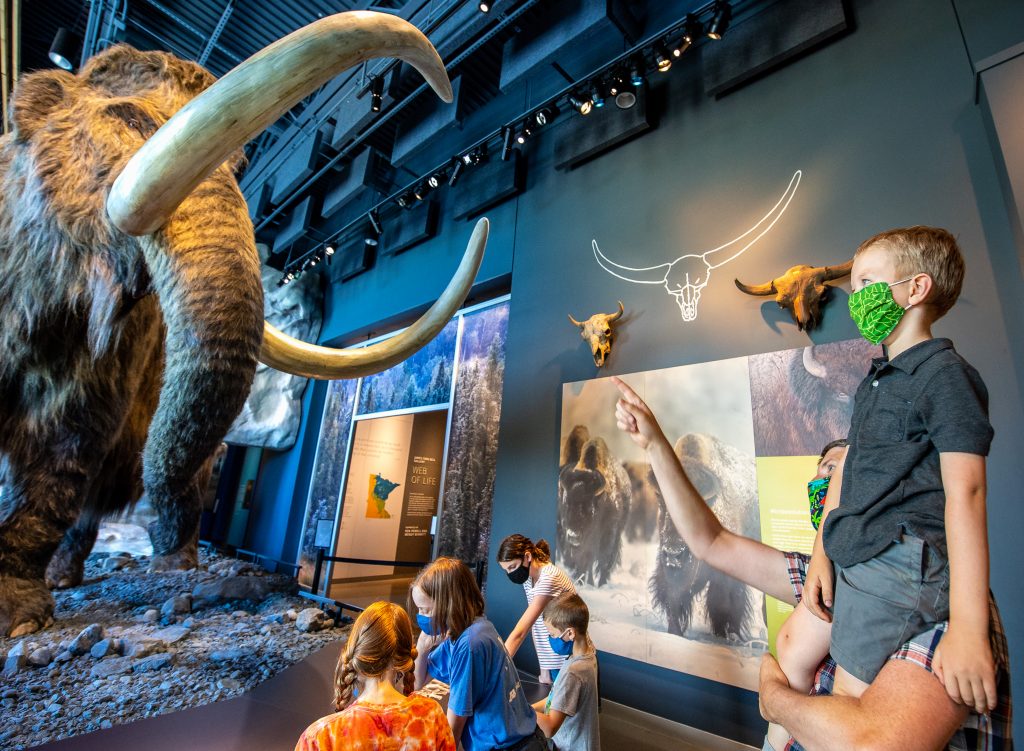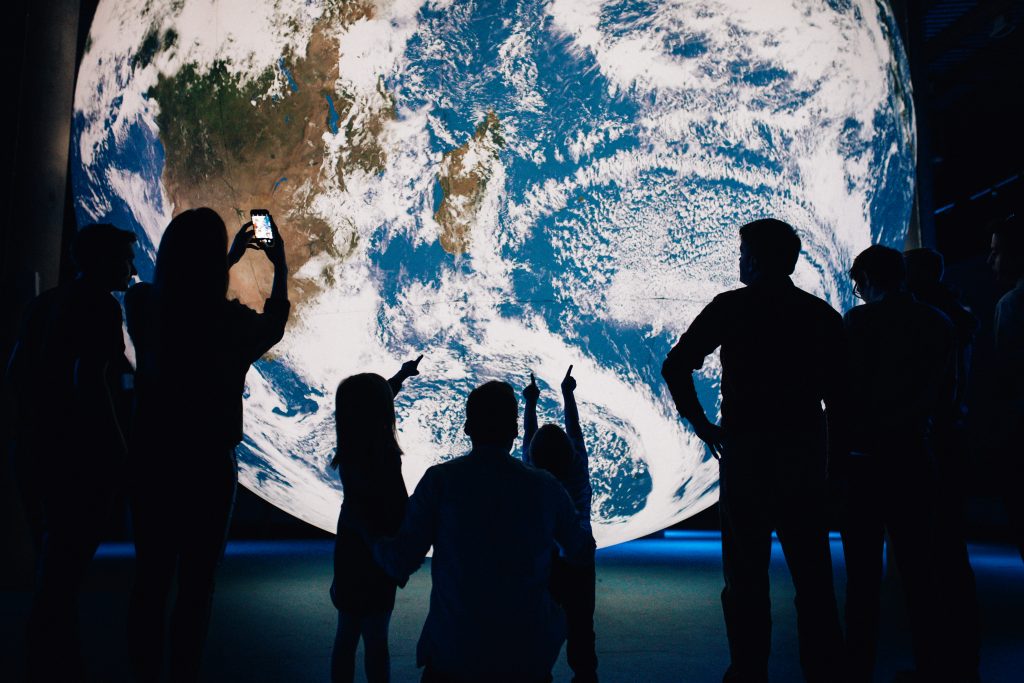
Photo by Joe Szurszewski
Spend your summer at the Bell Museum, Minnesota’s official natural history museum! There is no better time to bring the whole family for a day of exploration and discovery. Create new memories in our world-renowned wildlife dioramas, the hands-on Touch and See Lab, and tour the cosmos in the Whitney and Elizabeth MacMillan Planetarium.
Stop by the Bell Museum’s Learning Landscape July 12–16 for Bell Expeditions and observe in real-time the process of preparing natural history specimens. Watch live dissections as students and scientists work together to take various data, preserve different types of samples, and produce specimens for the Bell Museum natural history collections.

Photo by 019 (c) W5, Belfast
Later in the month, experience Gaia, a touring installation by UK artist Luke Jerram. On view July 19-August 14, Gaia is an internally-lit sculpture of the Earth featuring imagery from NASA’s Visible Earth project. At 23 feet in diameter, the artwork presents the Earth at a scale 1.8 million times smaller than its real size and encourages viewers to take a closer look at the place we all call home. Take a deeper dive into planet Earth with several engaging activities throughout the museum including a scavenger hunt that helps seekers learn more about the Earth, a special display in Collections Cove exploring the world of maps, and more!
After witnessing the beauty of Gaia, enjoy a special planetarium show, Atlas of a Changing Earth. The University of Minnesota’s Polar Geospatial Center is featured in this stunning film visualizing the processes affecting our warming planet. The film invites its audience to observe striking new imagery from space that explores changing coastal glaciers and rising seas.

Photo by Joe Szurszewski
Then explore the beauty of birds in the Bell Museum original exhibition Seeing Birds on view until October 2, 2022. The exhibition integrates art, science, and nature to ignite curiosity and wonder about the biology of birds, engaging visitors in an exploration of birds, their environments, and their evolution. Learn more about the world of research at the University of Minnesota and the impact of collections-based research on our world.






